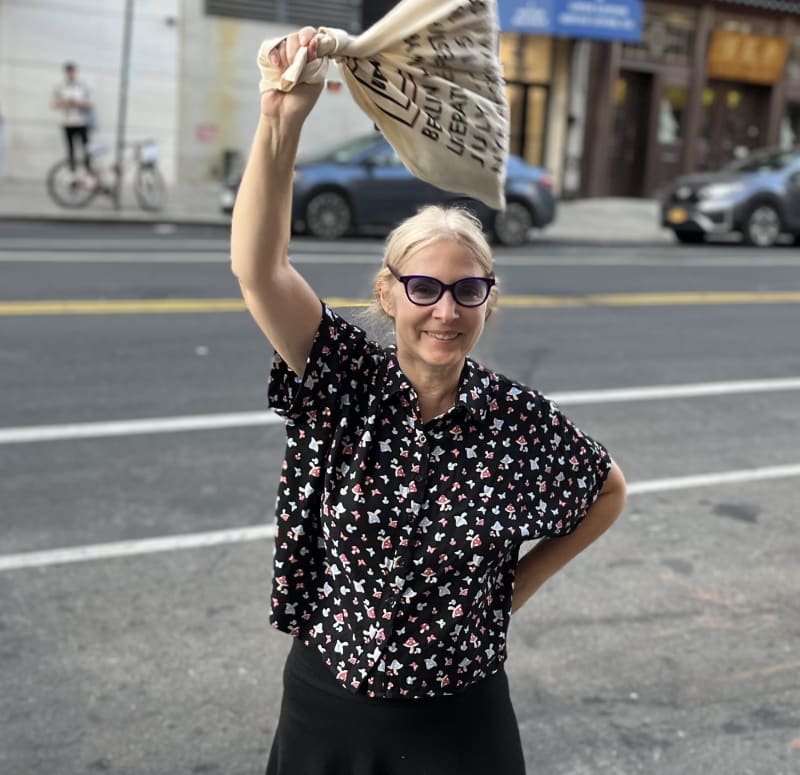Julia Kissina is an artist and writer. Born in Kiev in 1966, she studied dramatic writing in Moscow, then moved to Germany, graduated from the Academy of Fine Arts in Munich and taught as a Professor of New Media and Art Photography.Currently the artist lives between Berlin and New York City.
In 2000 Julia Kissina herded an actual flock of sheep into the Museum of Modern Art in Frankfurt as part of a performance. In 2003 she curated the Art & Crime festival in Berlin, and performed in a German prison. In 2006 she created The Dead Artist’s Society, which held séances to conduct Dialogues with Classics such as Duchamp and Malevich.
A member of the Moscow Conceptualist movement and Russian literary underground avant-garde (Samizdat), Julia Kissina is the author of several novels and story collections translated throughout Europe. Suhrkamp Verlag, Germany has published her novels Springtime on the Moon, Elefantina, and an anthology of contempoprary prose «Revolution Noir», which she edited. In 2018 she created Urban Dictionary a literary festival in Berlin, that brought together writers from New York and Berlin.
Since 2020 she has been working on a group of ink drawings that develop her interest in the undercurrents of eroticism and even violence in supposedly polite society: people, half-human creatures, and strange animals populate cocktail parties whose participants are partly taken from vintage film noir and partly derived from Kissina’s unusual, telling ability to describe the inherent complexities of contemporary social life.
The drawings themselves are mostly crowded scenarios of figures, not always entirely human, mingling together at what might be a high-level art opening or a toast for the preview of a big movie. If it were not for the presence of not fully human invitées, the aristocratic air of the imagery and the black-tie attire of the party participants would be just another record of wealthy people celebrating culture. But, in fact, something else is happening: the people are arranged in an attitude of irony, in which Kissina takes her considerable drawing skills and delivers a judgment, far from benign, on the pretensions of men and women. It is true enough that all the world is a stage, but who would have thought that the actors would be so openly possessed of unkempt desire. Still, Kissina’s judgment is neither final nor absolute; she is recording the undercurrents of a need for recognition as well as human closeness in a way that stays away from judgment.
Kissina, in her art, knows the human predicament–the gap between our public self and our prejudicial desire–very well. The artist’s ongoing question, “How can this gap be described?”, is central to Kissina’s skepticism regarding social posing, part of cultivated life for a long time now. How do we make sense of a façade that remains one, especially in the world of art, which is supposedly given to a trenchant, truthful analysis of human behavior? While Kissina’s work cannot easily be compared, in stylistic terms, to the German expressionism of the first third of the 20th century, perhaps its goal, namely the interrogation of hierarchical positioning within polite society, and the themes raised by the artist, are closer to this artistic movement by their meanings than it seems.
“I talk about what I see around me, making movie on paper. This is true independent cinema without beginning or end. I have actors and characters, stars, animals, magicians, maniacs and libertines. I have castles and deserts, planets and mouse holes at my disposal. Recently, someone said that this is a movie that cannot exist. During work, I feel being in atrance and all I need for working is an isolation. So the recipe of the creation is simple.” Julia Kissina
